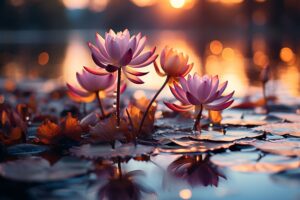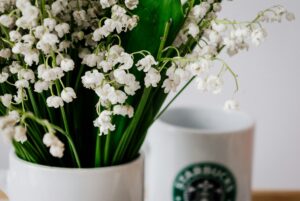June is when summer arrives in full bloom—warm days, golden light, and everything feels just a little more romantic. So it makes perfect sense that the June birth flowers are the rose and the honeysuckle. One is iconic, deeply rooted in history and poetry; the other is wild, sweet, and bursting with fragrance. Together, they capture the energy of the season: love, passion, and beauty that refuses to fade.
Whether you’re here because you’re a June baby, shopping for someone who is, or just a lover of blooms, these two flowers have some stories to tell. Let’s dive in.
What Are Birth Flowers?
Birth flowers are kind of like zodiac signs or birthstones, but for plant lovers. The idea is simple: each month has a flower (or sometimes two) associated with it. These birth month flowers have been around for centuries, going back to Roman times when people believed certain blooms brought luck, healing, or symbolic meaning.
By the Victorian era, the language of flowers (a.k.a. floriography) was all the rage. People used blossoms to say the things they couldn’t say out loud—a red rose for love, a white lily for purity, and so on. It turned bouquets into personal messages.
So when you look at flowers by month, you’re looking at more than just what’s in season. You’re seeing personality, symbolism, and tradition rolled into petals and leaves. And for June, that personality is bold, romantic, and a little bit nostalgic.
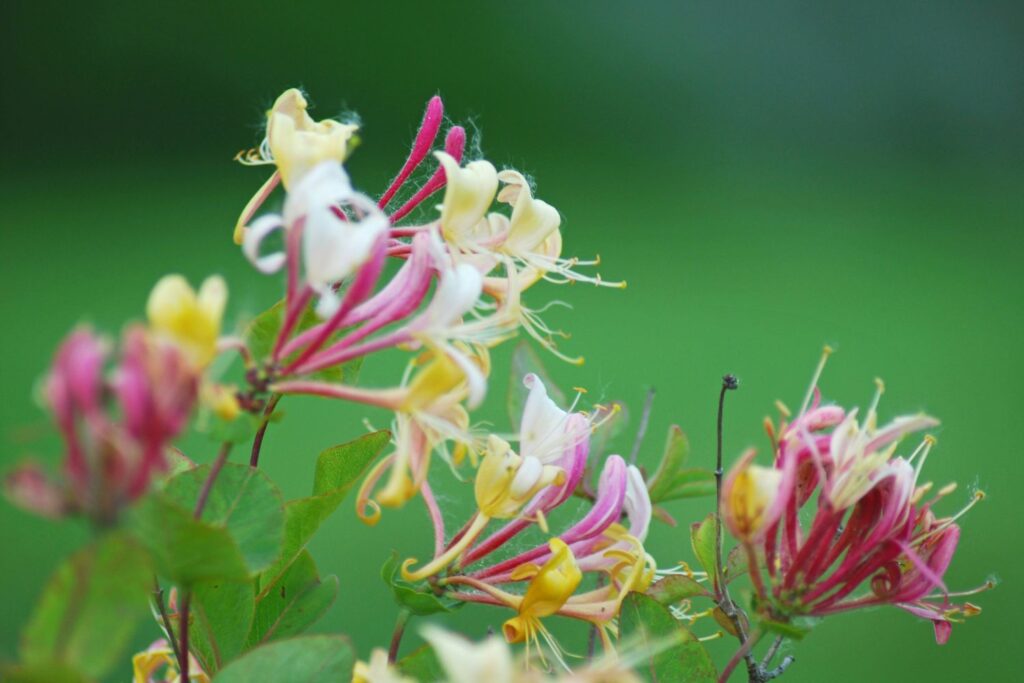
June Birth Flower: Rose
Timeless, romantic, and endlessly captivating, the rose reigns as June’s iconic birth flower. With its velvety petals and intoxicating fragrance, this beloved bloom symbolizes love, passion, and appreciation in all its vibrant hues. Discover the fascinating history, color meanings, and enduring charm of nature’s most celebrated flower!
Rose: History and Symbolism
Let’s be honest—if flowers had a celebrity hall of fame, the rose would be front and center, probably signing autographs. From ancient myths to modern-day romance, roses have carried the weight of love, beauty, and emotion like no other bloom.
The story begins way back in ancient Rome, where roses were symbols of both love and secrecy (ever heard of “sub rosa”?). In Greek mythology, they were tied to Aphrodite, the goddess of love. Fast forward a few centuries, and they were showing up in royal gardens, religious art, and every poet’s metaphor of choice. In Christianity, the rose often symbolizes the Virgin Mary. And across the centuries, poets and lovers alike have reached for roses when words fell short.
We at Ode à la Rose totally get the obsession. There’s just something mystical about a rose bouquet that feels effortlessly timeless and beautiful, a true icon of love and romance.
Beyond romance, roses also speak to passion, mystery, and even remembrance. They can say “I love you” or “I’m thinking of you” without uttering a single word. And no matter the century, the culture, or the language, people have always found meaning in those petals.
So when someone gives you a rose, it’s never just a flower. It’s a story, a gesture layered with history, heart, and a little magic.
Rose: Colors and Their Meanings
Roses aren’t just about red. They come in a rainbow of shades, each one whispering a different message. That’s part of their charm—and maybe why they’ve been stealing hearts for centuries. Whether you’re planning a romantic gesture or picking out a bouquet just because, the color you choose can add a whole new layer of meaning.
- Red: The universal symbol of love, desire, and passion
- White: Elegance, innocence, remembrance—perfect for new beginnings or thoughtful tributes
- Yellow: Cheerful friendship and sunny joy (great for a bestie!)
- Pink: Sweetness, gratitude, and a gentle kind of love
- Orange: Bold energy, enthusiasm, and a little spark of wild romance
- Lavender: Magic, mystery, and love at first sight
We love the way color transforms a simple rose into a story. Mix pink and white for something tender and heartfelt. Go full red for the classic romantic statement. Or let a burst of orange and yellow say, “You light up my world.” It’s all in the petals—you just get to choose the mood.
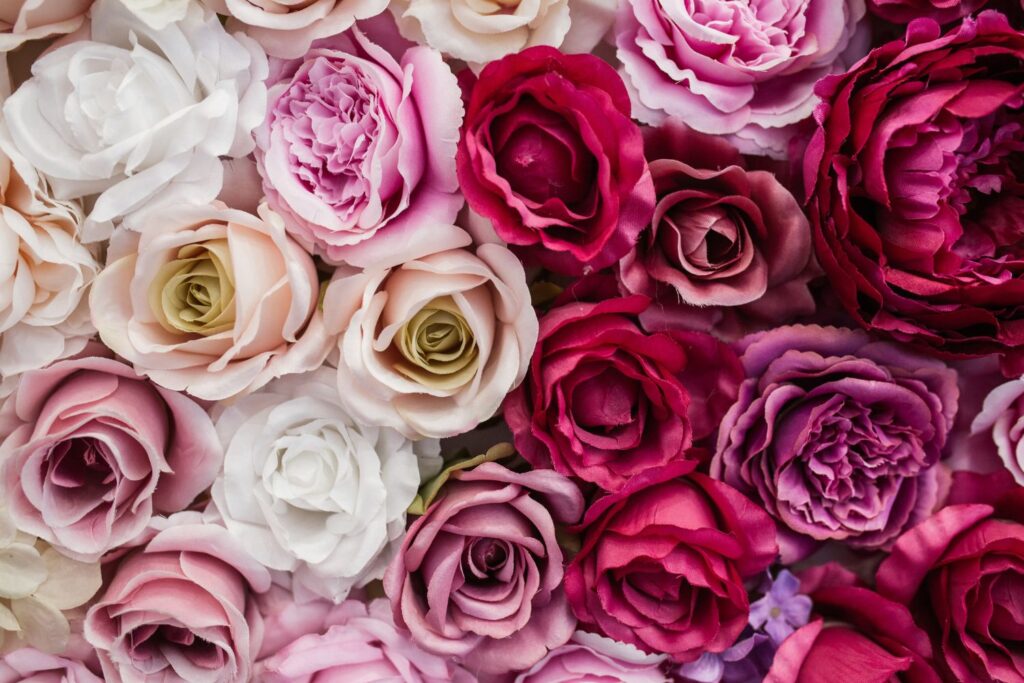
Rose: Growing and Caring
Roses may have earned a bit of a diva status, but they’re not nearly as fussy as their reputation suggests—especially the newer varieties. Whether you’re going for romantic climbing roses, tidy shrubs, or classic hybrid teas, you’ll be surprised at how rewarding they can be with just a little care.
- Sunlight: They adore the spotlight—at least 6 hours of full sun each day.
- Soil: Rich, well-draining soil gives them the foundation they need to thrive.
- Watering: Think deep and infrequent. A solid soak once or twice a week should do, more if it’s especially hot.
- Pruning: Don’t be afraid to get in there! Prune in early spring to remove deadwood and shape the plant.
Great blooms come from thoughtful care. When roses are happy, they don’t just bloom—they show off. That intoxicating scent, those full, layered petals… it all pays you back in beauty. Grow them right, and you’ll have a garden that feels like a love letter to summer.
June Birth Flower: Honeysuckle
With its intoxicating fragrance and trumpet-shaped blooms, this charming vine symbolizes devotion, everlasting bonds, and sweet memories of summer. Whether twining through garden trellises or perfuming the evening air, honeysuckle captures the essence of warm June nights.
Honeysuckle: History and Symbolism
Honeysuckle feels like summer nostalgia in bloom. Maybe it takes you back to childhood evenings, when you’d pull apart the delicate blossoms to taste that single drop of nectar. Or maybe it’s the warm, heady scent that floats on the breeze and instantly slows time, like nature telling you to pause and breathe.
Symbolically, honeysuckle is all about affection, lasting bonds, and the kind of love that doesn’t need grand gestures to feel real. It speaks to devotion—not the flashy, dramatic kind, but the steady, comforting sort that wraps around your life like a favorite sweater.
In Celtic folklore, honeysuckle was planted near doorways to ward off evil spirits and invite good fortune. And in the Victorian language of flowers, it meant a sweet disposition and unwavering love. It’s a bloom that might not demand attention, but the people who know it? They get it.
If roses are the grand romantic speech, honeysuckle is the quiet note slipped into a lunchbox. Different in tone, but just as meaningful.
Honeysuckle: Unique Characteristics
Honeysuckle isn’t one to fade quietly into the background. It climbs, it twirls, it perfumes the air with a sweetness you can almost taste. Depending on the variety, it can be a trailing vine or a full-bodied shrub, making it versatile and full of character.
Its flowers are like tiny trumpets calling to every pollinator in the neighborhood—bees, butterflies, and hummingbirds can’t resist. And in terms of color? You’ll see shades ranging from creamy white and buttery yellow to soft pinks and fiery reds. Each one adds a wild beauty to the garden, like a spontaneous flourish in nature’s design.
- Blooms from late spring through the heart of summer, just when everything feels a little more alive
- Hardy and adaptable, it thrives in many climates and settings
- Evergreen in warmer regions, offering year-round greenery
- Perfect for climbing trellises, fences, or even winding through porch railings
And let’s not forget the scent—honeysuckle saves its best show for twilight, when its perfume intensifies. It’s the kind of scent that makes you linger a little longer outside, drink in the moment, and maybe wish summer would never end.
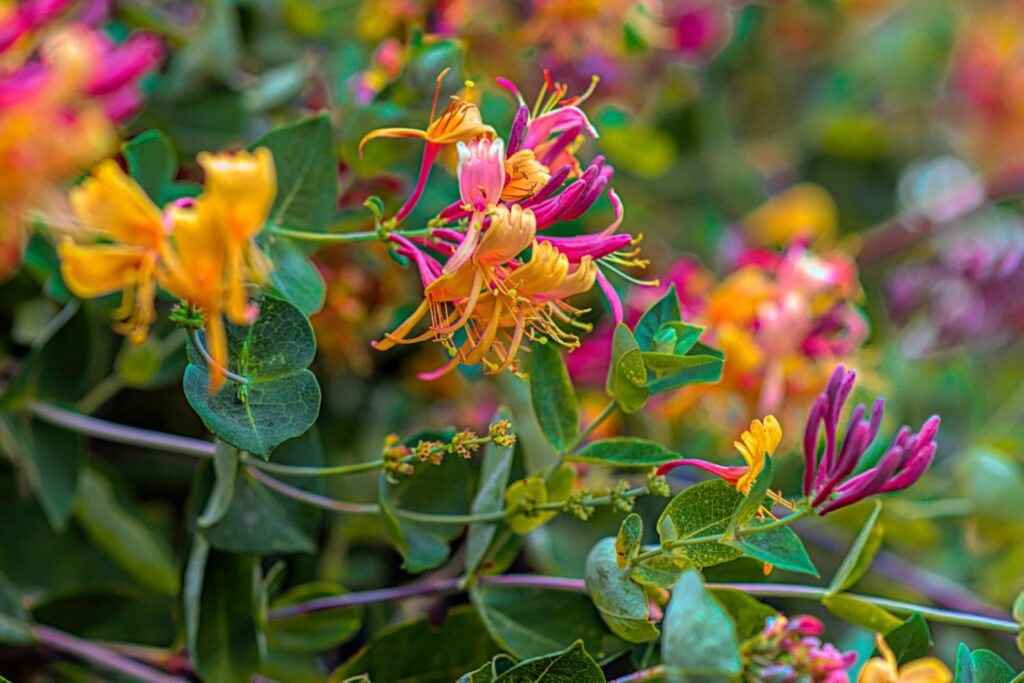
Honeysuckle: Growing and Caring
If you’re looking for a plant that practically takes care of itself and still gives you a garden full of charm, honeysuckle is your new best friend. This vine (or sometimes shrub) is perfect for anyone who likes their flowers a little wild and wonderfully fragrant.
- Sunlight: Honeysuckle thrives in full sun but won’t complain with a bit of shade—perfect for fences, pergolas, or the sun-dappled side of your yard.
- Soil: It’s not picky. Well-drained soil is ideal, but it adapts to different conditions pretty easily.
- Watering: Once it’s established, honeysuckle can handle dry spells, though regular watering keeps the blooms coming.
- Pruning: After it flowers, give it a good trim to keep it looking neat and encourage more growth next season.
The real joy of growing honeysuckle? It rewards you with an enchanting fragrance that only gets better in the evening. Let it climb where it wants to, and it’ll fill your space with a bit of wild elegance and sweet nostalgia.
How to Use June Birth Flowers
Discover inspired ways to weave roses (for love) and honeysuckle (for nostalgia) into weddings, home decor, and heartfelt gifts—turning everyday moments into unforgettable sensory experiences. Let’s explore the art of floral enchantment!
1. In Bouquets and Arrangements
Roses are the obvious choice for a romantic bouquet, but pairing them with honeysuckle adds texture, fragrance, and that touch of whimsy. Imagine a soft pink rose nestled next to wild sprigs of honeysuckle—it’s romance and nature all in one.
2. As Gifts
- A bouquet of June birth flowers makes a thoughtful birthday surprise
- Potted honeysuckle adds long-lasting beauty to patios or balconies
- Rose-scented candles or honeysuckle-infused oils are perfect for self-care packages
3. In Home Decor
- Float rose petals in a bowl of water for a simple, elegant centerpiece
- Drape honeysuckle vines across a mantel or entryway for a cottage-core vibe
- Press petals or blossoms for framed floral art that lasts year-round
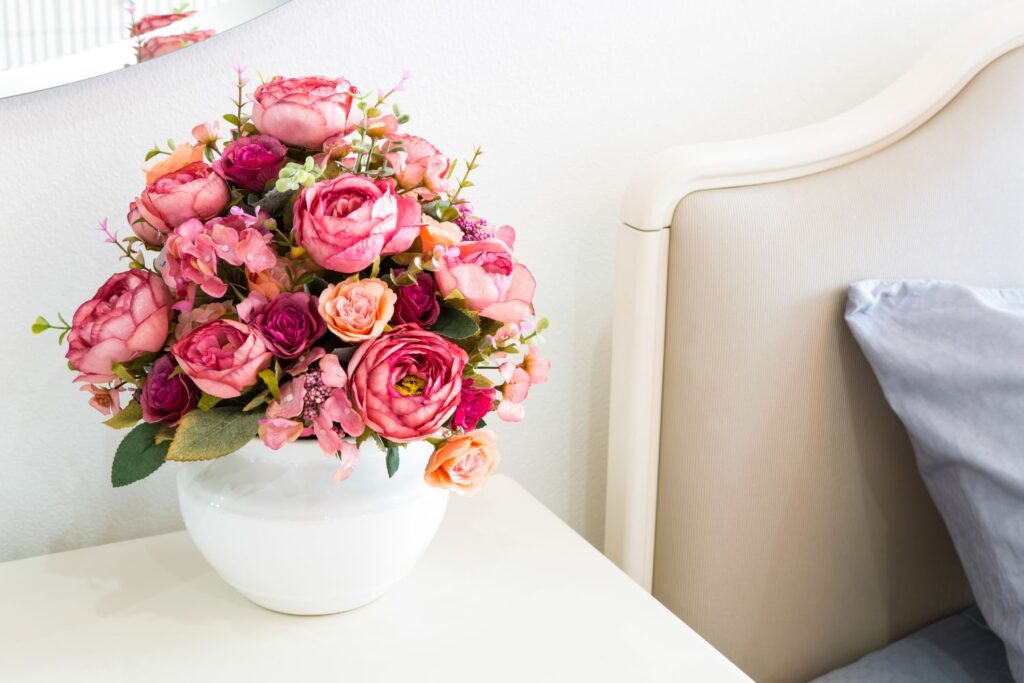
Fun Facts About June Birth Flowers
- There are over 300 species of roses—from wild varieties to sophisticated hybrids bred for color, shape, or scent. Talk about a floral overachiever.
- Honeysuckle was once believed to unlock dreams when placed under pillows. Dreamy scent, literal dreams—makes sense.
- Roses are edible! Their petals can be used in jams, jellies, syrups, and even desserts. Rose-flavored macarons, anyone?
- The scent of honeysuckle intensifies at night, attracting pollinators like moths and making evening gardens smell absolutely magical.
- In some cultures, gifting a red rose without thorns is a gesture of deep trust.
- Honeysuckle nectar was a favorite childhood treat for many—a tiny drop of sweetness from nature’s candy store.
- Shakespeare mentioned roses more than 70 times in his works. Clearly, the Bard had a favorite bloom.
These blooms aren’t just beautiful—they come with personality, stories, and a few delightful surprises.
Conclusion
The June birth flowers—rose and honeysuckle—are a match made in floral heaven. One is bold and timeless, the other sweet and unexpected. Together, they remind us that love can be both grand and gentle, fiery and enduring.
Whether you’re growing them in a garden, gifting them to someone special, or just admiring their symbolism, these flowers capture the essence of early summer: vibrant, romantic, and full of life.


